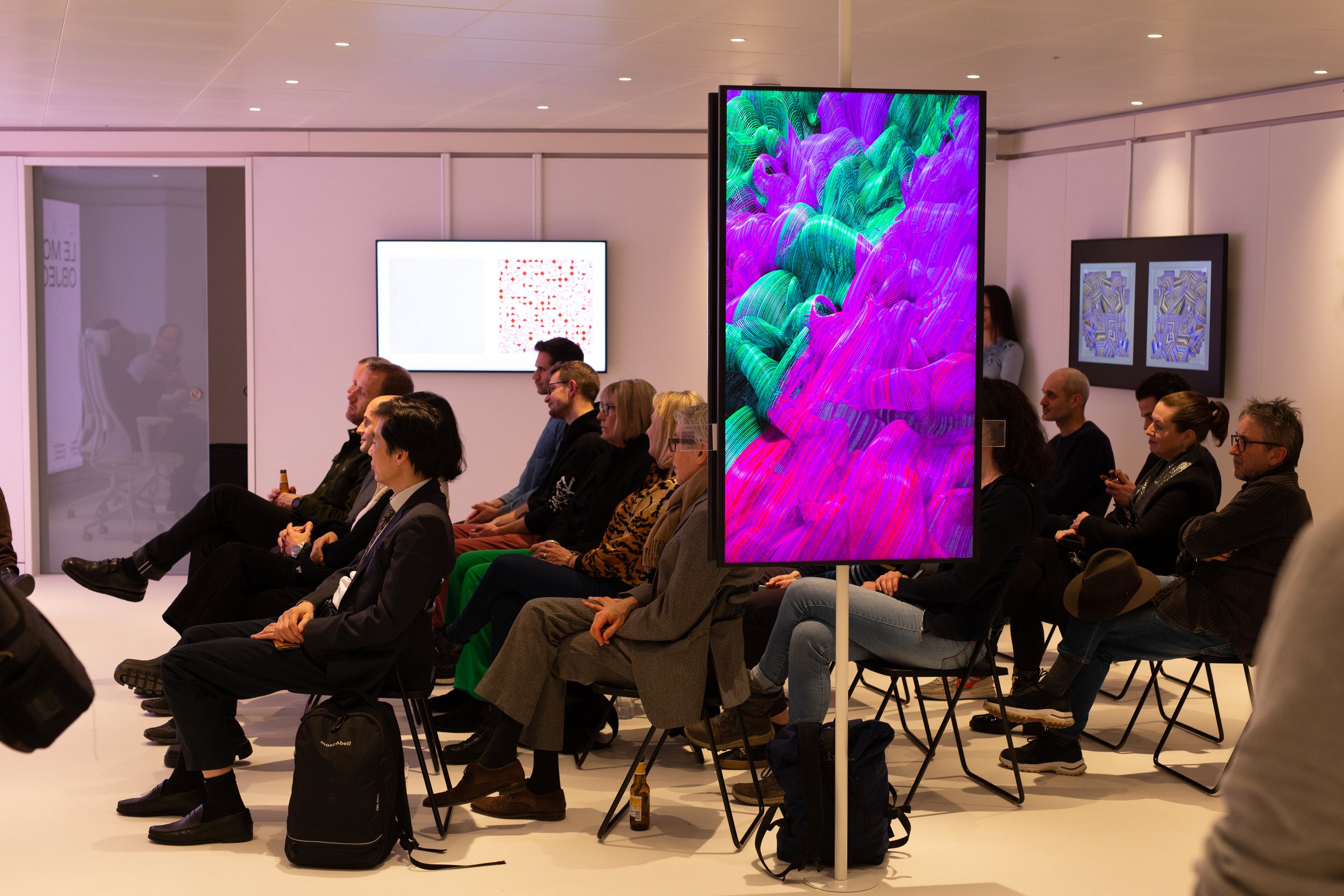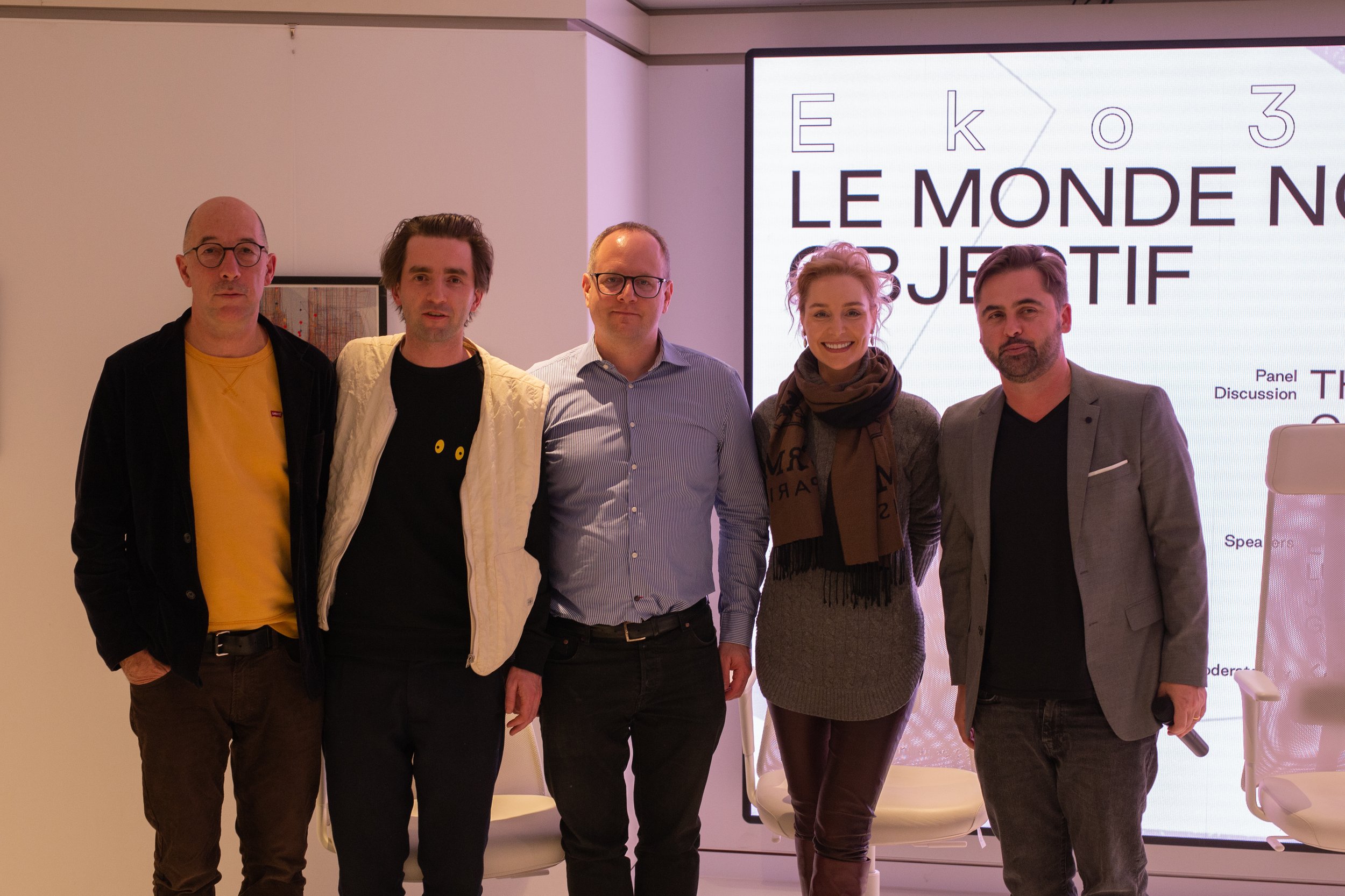Panel talks at «Le monde non objectif» exhibition finissage
On 31/1, at the finissage of the solo show of Swiss generative artist Eko33 "Le monde non objectif", curated by Kate Vass Galerie at unpaired, we also hosted the panel about the history and the future of generative art. The conversation foregrounds key definitions to examine the history of the human & the machine relationship. The panel was meant to outline current tendencies and their relation to art history with decades of experimentation.
Our speakers: are Eko33, Johannes Gees, Lukas Amacher, and Georg Bak, chaired by Kate Vass.
Digital art did not develop in an art-historical vacuum; it has strong connections to previous art movements, including Dada, Fluxus and conceptual art. The importance of the above for digital art resides in their emphasis on formal instruction and their focus on concept, event, and audience participation, as opposed to unified material objects. The idea of rules being process for creating art has a clear connection with the algorithms that form the basis of all software and every computer operation: a procedure of formal instructions that accomplish a 'result' in a finite number of steps. Just as with Dadaist poetry, the basis of any form of computer art is instruction as a conceptual element. Art's notions of interaction and 'virtuality' were also explored early on by artists such as Marcel Duchamp & Laszlo Moholy Nagy in relation to objects & their optical effects. Duchamp's work, in particular, has been extremely influential in digital art: the shift from object to concept embodied in many of his works can be seen as a predecessor of the 'virtual object' as a structure in the process. Fluxus group performances and events in the 1960s were also often based on the execution of precise instructions.
The element of 'controlled randomness' that emerges in Dada, OULIPO, and the works of Duchamp & John Cage points to one of the basic principles and most common digital medium paradigms, the concept of random access as a basis for processing and assembling information. Computers were used for the creation of artworks as early as the 1960s. Michael A. Noll, a researcher at Bell Labs, created some of the earliest computer-generated images, e.g. Gaussian Quadratic (1963), which were shown at Howard Wise gallery in NY in 1965.
We invite you to browse the catalogue of the show here and follow up for more events:
#generativeart #curatedart #digitalart #historyofart




